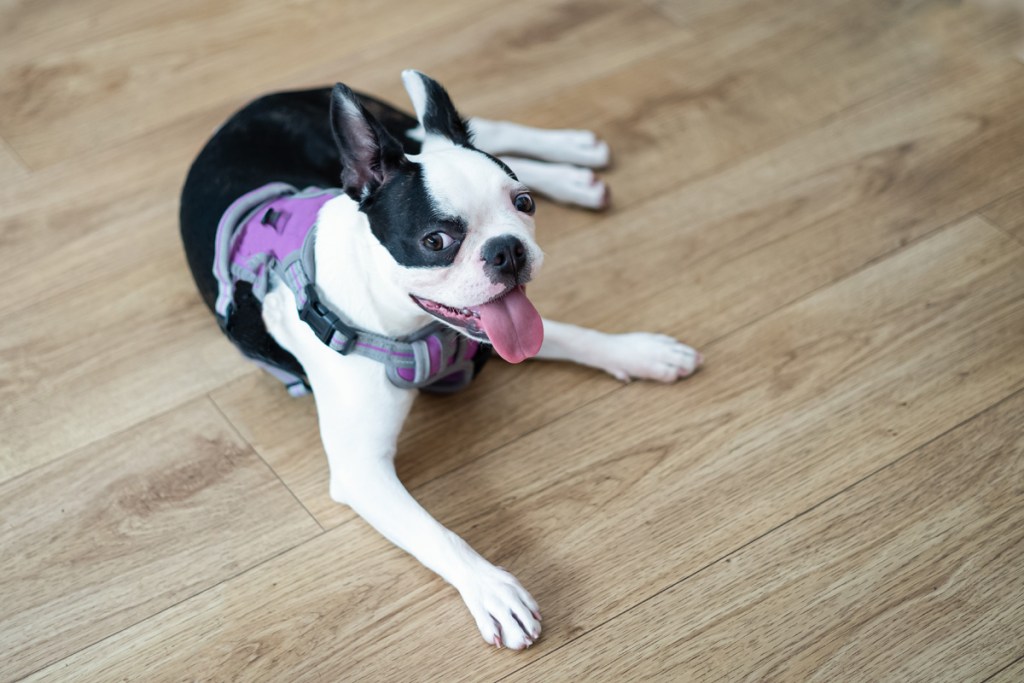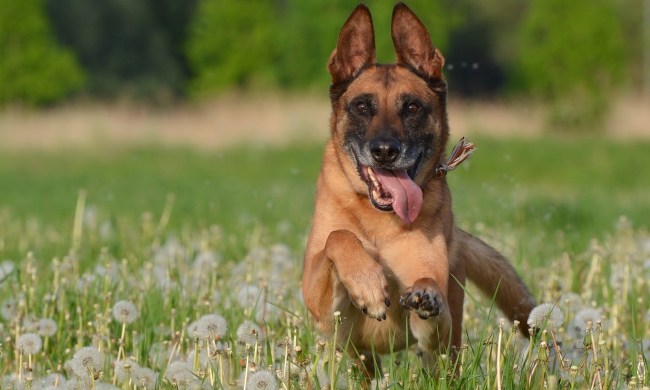Adding a puppy to the household is so exciting. Now you have a new playmate and a walking buddy. But don’t be too quick to grab the leash and harness and head out on those long adventures. According to the American Kennel Club (AKC), while there’s a lot of debate in the dog world about puppies and exercise, veterinarians, breeders, and trainers all seem to agree that too much exercise is just as bad as not enough when it comes to growing puppies. Additionally, for very young puppies you have to consider health issues before taking a walk.
When do puppies start walking?
All dogs need exercise for their physical and mental health, and for puppies, walking provides important socialization opportunities. However, because puppies are vulnerable to serious diseases such as parvovirus and canine distemper, veterinary experts recommend not walking in areas frequented by unknown dogs until at least two weeks after a pup’s final vaccinations. Typically puppies receive their final shots at around 16 weeks of age. This doesn’t mean that you have to confine your new puppy to the house or backyard until then.

Young puppies need to be socialized
Because the first three months of a puppy’s life are when sociability outweighs fear, they encompass the “primary window of opportunity for puppies to adapt to new people, animals, and experiences,” according to the American Veterinary Society of Animal Behavior (AVSAB). Improper socialization during this important time can increase the risk of behavioral problems later in life, including fear, avoidance, and/or aggression. It’s a serious concern since behavioral issues not only damage the bond between owners and their dogs but are also among the top reasons dogs are surrendered to shelters, say animal advocates.
Veterinary experts say it’s fine to take your puppy outside before he’s fully vaccinated as long as you exercise caution. The AVSAB recommends enrolling your newcomer in puppy socialization classes as early as 7-8 weeks of age. Just be sure your pup has received a minimum of one set of vaccines and his first deworming at least seven days before the first class, and continue to keep your puppy current on his vaccinations throughout all of his training sessions. In addition to attending training classes you can:
- Stride along together in safe areas not frequented by unknown dogs and keep your puppy away from any stagnant puddles and dog poop.
- Take your pup for walks with fully vaccinated dogs that belong to friends and family.
- Stroll around pet-friendly retail stores and shopping malls side by side. The AKC recommends these trips as a great way to introduce your puppy to a wide variety of people.
How far should puppies walk?
Once your puppy is fully protected and you’re ready to head out for a walk, how far can you go? In a Vetstreet article, veterinarian and orthopedic specialist Marc Wosar said there are no hard and fast rules on the right amount of exercise for puppies. He recommends that pet parents reach out to their veterinarians for guidance. According to Wosar, veterinarians make approximate recommendations based on an individual dog’s breed, energy level, behavioral needs, and risk of developing diseases that may be affected by exercise.
Too much exercise can cause injury to a puppy
Professionals at the Kennel Club of the U.K. remind us that puppies need much less exercise than fully-grown dogs, and veterinary experts say that over-exercising a growing puppy can damage developing joints, which can cause arthritis. When considering how far to walk your puppy, the Kennel Club recommends using a ratio of five minutes of exercise per month of age twice a day. So for example, a 2-month-old puppy can be walked for 10 minutes twice a day for a total of 20 minutes, and a 4-month-old puppy can be walked for 20 minutes twice a day for a total of 40 minutes. Once your dog is fully grown you can start increasing the length of the walks.
Teaching your puppy to walk on a leash
Of course, to take your pup on any outdoor adventure you’ll have to first teach him to walk on a leash. Kathy Santos, AKC Family Dog training and behavior columnist, recommends introducing your dog to the harness and leash while inside the house. Play with your puppy and give him treats while he’s wearing the harness and leash so he makes a positive association with them. Use reward-based training when teaching your puppy to walk on a leash. Be patient once you move the training outside as there will be lots of new distractions. Santos said pet parents should keep training sessions short and always end on a positive note when the “puppy is eager to do more and not when he’s mentally exhausted.”

Enjoy your daily strolls
As you develop an exercise plan for your dog, remember that his size, breed, and temperament will play a role in the type and intensity of activity he enjoys. Even in adulthood, low-energy dogs like bulldogs and basset hounds might be happy with local neighborhood walks, while breeds such as border collies and Labrador retrievers will be excited to accompany you on long hikes. Adjusting the walk to suit your dog’s ability and temperament will ensure you both safely enjoy the experience.



